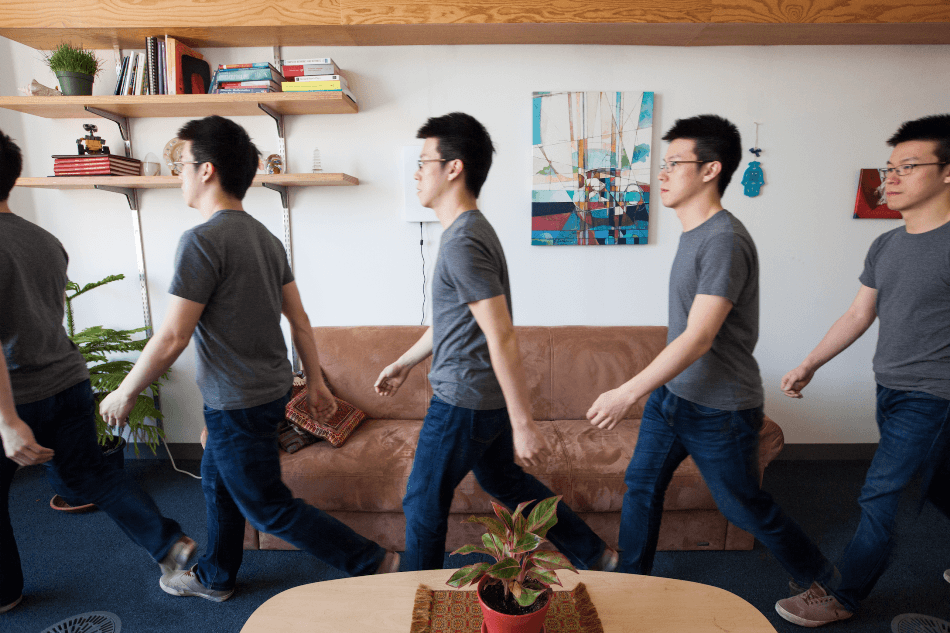May 2 2017
It is a long-known fact that body temperature, breathing, pulse, and blood pressure are the vital signs being monitored to understand the complexities of human health. However, a growing body of research reveals that how fast a person walks could serve as a vital sign to better predict health issues like falls, cognitive decline, and even certain pulmonary or cardiac diseases.
 WiGait uses wireless signals to continuously measure a person's walking speed, which may help predict cognitive and motor function decline, and even certain cardiac or pulmonary diseases. (Photo: Jason Dorfman/CSAIL).
WiGait uses wireless signals to continuously measure a person's walking speed, which may help predict cognitive and motor function decline, and even certain cardiac or pulmonary diseases. (Photo: Jason Dorfman/CSAIL).
Unfortunately, accurately monitoring the walking speed in a continuous and unobtrusive manner is not an easy task. Professor Dina Katabi’s research team at MIT’s Computer Science and Artificial Intelligence Laboratory (CSAIL) is aiming to find a solution to this problem. According to the group, the solution is to go wireless.
In a recent paper, the researchers have explained their new device called WiGait, which is capable of measuring the walking speed of different people with 95% to 99% accuracy using wireless signals.
The size of the WiGait is that of a small painting, allowing it to be mounted on the wall of a user’s house and its signals release approximately one-hundredth the amount of radiation emitted by a standard cellphone. It is based on Katabi’s earlier work on WiTrack, which measures a range of behaviors of people from falling to breathing and specific emotions.
By using in-home sensors, we can see trends in how walking speed changes over longer periods of time. This can provide insight into whether someone should adjust their health regimen, whether that’s doing physical therapy or altering their medications.
Lead author and PhD student Chen-Yu Hsu.
WiGait measures a person’s stride length at an accuracy of 85% to 99%, enabling researchers to gain insights into conditions which are characterized by reduced step size such as Parkinson’s disease.
Hsu and Katabi along with CSAIL PhD student Zachary Kabelac, master’s student Rumen Hristov have developed the WiGait. Undergraduate Yuchen Liu from the Hong Kong University of Science and Technology, and Christine Liu, an Assistant Professor from the Boston University School of Medicine, have also contributed to the development. In May 2017, the group will present its paper at ACM’s CHI Conference on Human Factors in Computing Systems in Colorado.
How it works
At present, clinicians or physical therapists use a stopwatch to measure the walking speed. Wearables like FitBit can only provide rough estimation of the walking speed based on step count. GPS-enabled smartphones also provide inaccurate results and cannot be used in indoors. Cameras are not only intrusive, but are also capable of monitoring only one room. A method that has an accuracy comparable to WiGate is VICON motion tracking, but its limited availability makes them less useful for monitoring day-to-day health changes.
Also, walking speed can be measured with a high level of granularity using WiGait, with no need of wearing or carrying a sensor. The device analyzes the surrounding wireless signals and the reflections of the signals off a person’s body to measure the walking speed. The CSAIL group’s algorithms can also differentiate walking from other movements, such as brushing one's teeth or cleaning the kitchen.
Katabi explains that the WiGait could help acquire a wealth of key health data, especially for old people. A change in walking speed, for instance, could be an indication that the person is at a high risk of falling or has an injury. Moreover, the system's feedback could help the person to take a decision that whether they should shift to a different environment, for example, an assisted-living home.
Many avoidable hospitalizations are related to issues like falls, congestive heart disease, or chronic obstructive pulmonary disease, which have all been shown to be correlated to gait speed. Reducing the number of hospitalizations, even by a small amount, could vastly improve health care costs.
Katabi
The researchers created WiGait to be more privacy-minded when compared to cameras, showing users as nothing more than a moving dot on a display. They plan to use their device on people suffering from walking impairments such as multiple sclerosis, Alzheimer’s, or Parkinson’s, to provide assistance to physicians to accurately monitor disease progression and make adjustments in medications accordingly.
The true novelty of this device is that it can map major metrics of health and behavior without any active engagement from the user, which is especially helpful for the cognitively impaired. Gait speed is a proxy indicator of many clinically important conditions, and down the line this could extend to measuring sleep patterns, respiratory rates, and other vital human behaviors.
Ipsit Vahia, a geriatric clinician at McLean Hospital and Harvard Medical School, who was not part of the research
WiGait: Measuring Walking Speed with Wireless